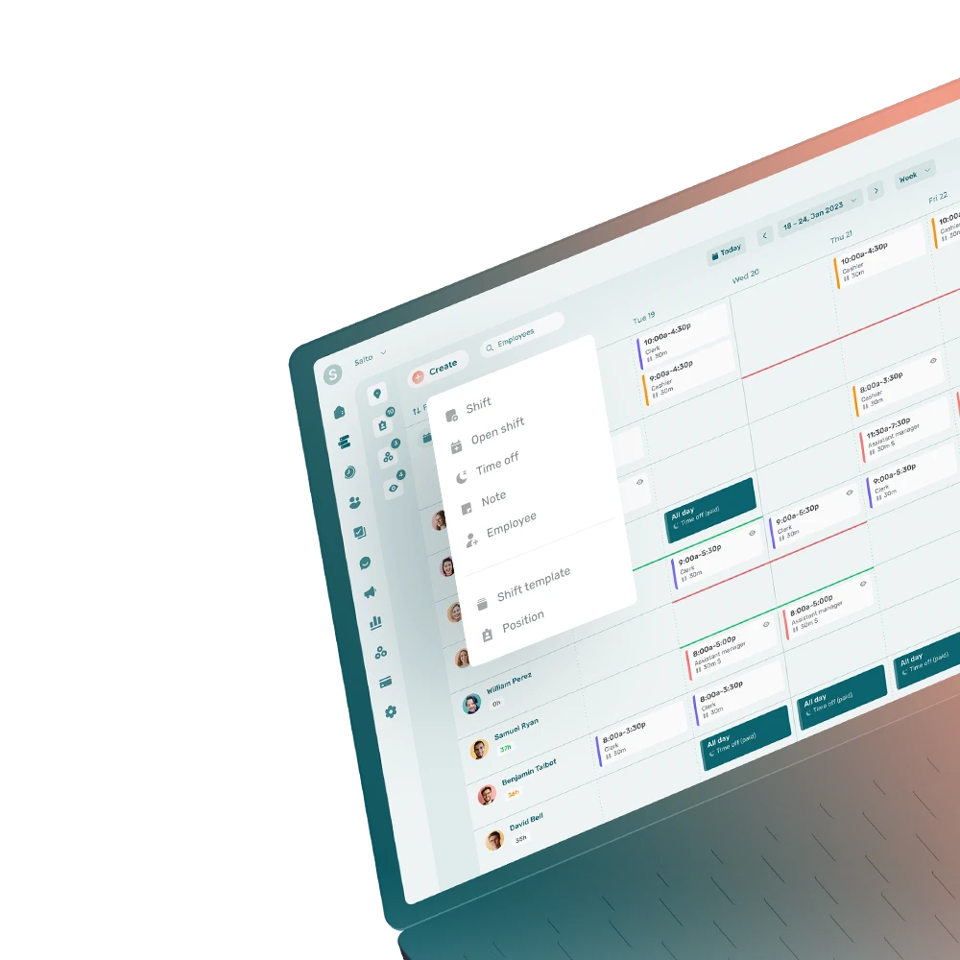Shift bidding is a scheduling method that allows employees to express their interest on an open shift before the employer assigns it to one of them.
How Does Shift Bidding Work?
Shift bidding typically works using an online employee scheduling tool. Managers create open shifts in their employee scheduling software and publish them so their employees can express their interest.
Employees receive the notifications for open shifts to which they qualify for. They can select which shift they would like to have in the form of a bid.
Thereafter, managers can assign shifts to each employee depending on their interest. Managers determine themselves how those shifts will be assigned: first come-first serve basis or by seniority, for example.
What Are the Benefits of Shift Bidding?
The benefits of shift bidding include:
- Giving employee more responsibilities regarding their schedule
- Offering more flexibility
- Increasing employee satisfaction and productivity
- Providing more autonomy
- Keeping some control over scheduling
- Improving employee engagement and retention
- Reducing time spent on scheduling tasks
- Reducing absenteeism
- Eliminating overtime
What Are the Drawbacks of Shift Bidding?
The drawbacks of shift bidding include:
- Depending on the interest of employees to assign different shifts
- Increasing employee conflicts
- Creating frustration for employees who don’t get the shift they wanted
Which Industries Use Shift Bidding?
Shift bidding is often used by companies who have hourly workers. It can be used in the following industries:
- Construction
- Hospitality
- Security
- Retail
- Pharmacy
- Senior residence
- Restaurant
- Hotels
- Tourism and seasonal
- Event and catering
- Healthcare
- Home care
What Are the Best Practices for Shift Bidding?
The best practices for shift bidding include:
- Being fair: assign shifts based on a transparent process whether it is on a first come-first serve basis or by seniority, for example.
- Avoiding micromanagement: let the bidding process go on, and adjusting the management process depending on the interest of each shift.
- Choosing open shifts carefully: some shifts have to be manually scheduled to ensure they are covered by the right employees.
- Identifying the right settings for open shifts: be specific on the requirements (time, experience, specific positions, seniority, etc.).
- Taking employee feedback: in order to adjust the practices.
- Using the right employee scheduling tool: to make shift bidding easy and efficient.
What Is the Difference Between Shift Bidding and Shift Swapping?
Shift bidding is when a manager asks employees to express their interest for open shifts. Shift swapping is when employees arrange to exchange or give one of their shifts by themselves.
Shift bidding is an initiative of managers whereas shift swapping comes for the employees.




